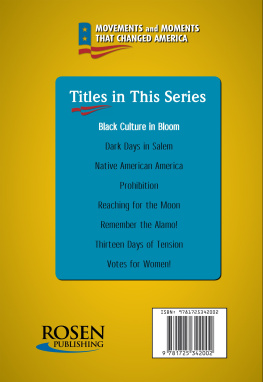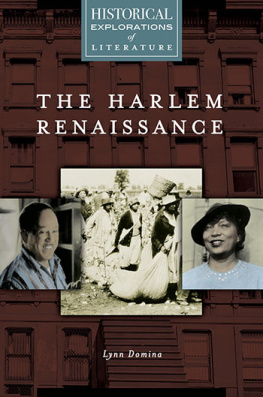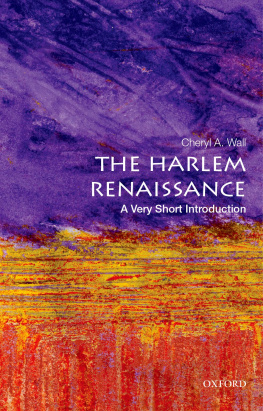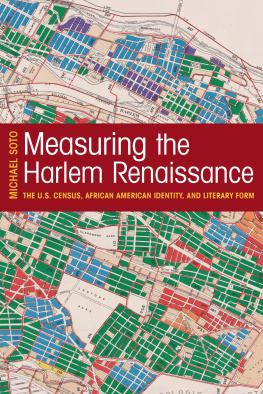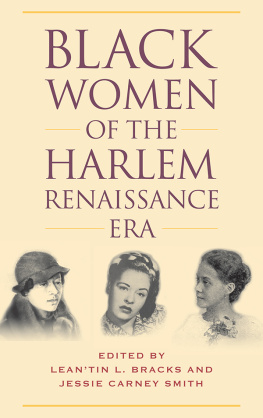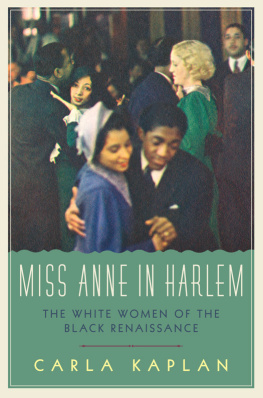
Published in 2016 by Britannica Educational Publishing (a trademark of Encyclopdia Britannica, Inc.) in association with The Rosen Publishing Group, Inc.
29 East 21st Street, New York, NY 10010
Copyright 2016 by Encyclopdia Britannica, Inc. Britannica, Encyclopdia Britannica, and the Thistle logo are registered trademarks of Encyclopdia Britannica, Inc. All rights reserved.
Rosen Publishing materials copyright 2016 The Rosen Publishing Group, Inc. All rights reserved.
Distributed exclusively by Rosen Publishing.
To see additional Britannica Educational Publishing titles, go to rosenpublishing.com.
First Edition
Britannica Educational Publishing
J. E. Luebering: Director, Core Reference Group
Anthony L. Green: Editor, Comptons by Britannica
Rosen Publishing
Hope Lourie Killcoyne: Executive Editor
Sabina G. Arora: Editor
Nelson S: Art Director
Nicole Russo: Designer
Cindy Reiman: Photography Manager
Libary of Congress Cataloging-in-Publication Data
The great migration and the Harlem Renaissance/edited by Sabina G. Arora.First edition.
pages cm.(The African American experience: From slavery to the presidency)
Includes bibliographical references and index.
ISBN 978-1-6804-8047-4 (eBook)
1. Harlem RenaissanceJuvenile literature. 2. African AmericansHistory18771964Juvenile literature. 3. African American arts20th centuryJuvenile literature. 4. Harlem (New York, N.Y.)Intellectual life20th centuryJuvenile literature. 5. New York (N.Y.)Intellectual life20th centuryJuvenile literature. 6. African AmericansNew York (State)New YorkBiographyJuvenile literature. I. Arora, Sabina G.
E185.6.G785 2016
305.8960730747dc23
2014039600
On the cover: (Left) A band performs at the Beaux Arts Ball of the National Urban League in the Savoy Ballroom, Harlem, 1949. The Savoy was a popular music hall during the Harlem Renaissance. (Right) The remarkable Harlem Renaissance performer and comedienne, Florence Mills.
Photo credits: Cover (Florence Mills portrait) John D. Kisch/Separate Cinema Archive/Archive Photos/Getty Images; cover (musicians) Gjon Mili/Time & Life Pictures/The Life Picture Collection/Getty Images; p. 5 New York Daily News/Getty Images; pp. 9, 1213, 33, 41 Library of Congress, Washington, D.C.; p. 14 Charles Alburtus/Yale University; pp. 1617 Encyclopdia Britannica, Inc.; p. 19 Jun Fujita/Chicago History Museum/Archive Photos/Getty Images; p. 22 Library of Congress, Washington, D.C., (LC-USZ61-1854); pp. 2627 George Karger/Pix Inc./Time & Life Pictures/Getty Images; p. 28 Courtesy of Howard University, Washington, D.C.; p. 30 Stock Montage/Archive Photos/Getty Images; pp. 3435, 66 AP Images; p. 37 Robert W. Kelley/The Life Picture Collection/Getty Images; p. 39 Between the Covers Rare Books, Merchantville, NJ; pp. 4243 Anthony Barboza/Archive Photos/Getty Images; pp. 4647 Schomburg Center, NYPL/Art Resource, NY; p. 48 Image copyright The Metropolitan Museum of Art, Image source: Art Resource, NY; p. 50 Future Expectations, photograph by James VanDerZee, c. 1925. Copyright 2008 by Dover Publications, Inc. Electronic image 2008 Dover Publications, Inc. All rights reserved; pp. 5253 The New York Public Library/Art Resource, NY; p. 54 General Photographic Agency/Hulton Archive/Getty Images; p. 57 Library of Congress, Washington, D.C., Arthur Rothstein (neg. no. LC-USF34-005788-D); pp. 6061 Robert Abbott Sengstacke/Archive Photos/Getty Images; p. 63 Thomas D. McAvoy/The Life Picture Collection/Getty Images; p. 65 Hulton Archive/Getty Images; interior pages background texture iStockphoto.com/ Piotr Krzeslak.
CONTENTS
W hen slavery was abolished in 1865, blacks were an overwhelmingly rural people. In the years that followed, there was a slow but steady migration of blacks to the cities, mainly in the South. Migration to the North was relatively small. Nearly eight million blacksabout 90 percent of the total black population of the United Stateswere still living in the South in 1900.
But between 1910 and 1920, crop damage caused by floods and insectsmainly the boll weevildeepened an already severe economic depression in southern agriculture. Impoverished blacks swarmed to the North in 1915 and 1916, as thousands of new jobs opened up in industries supplying goods to Europe, then embroiled in World War I. Between 1910 and 1920, an estimated 500,000 blacks left the South, in what became known as the Great Migration.
In northern cities, blacks faced a new set of challenges. Many took on low-paying jobs. Additionally, many remained segregated from whites and lived in ghettos. However, blacks also had new economic and educational opportunities. Publications and organizations dedicated to helping migrant blacks also facilitated their adjustment to urban life.

After the panic of 1893, many property owners in Harlem began renting homes to blacks. By the 1920s, Harlem was known as an African American residential, commercial, and cultural center.
The Great Migration helped set the social foundation for the later cultural movement known as the Harlem Renaissance, a blossoming of African American cultureparticularly in the creative artsand the most influential movement in African American literary history. The Harlem Renaissance was a phase of the larger New Negro movement that had emerged in the early 20th century and in some ways ushered in the early civil rights movement of the late 1940s and early 1950s.
Several factors contributed to the flourishing of this movement. First, levels of literacy among blacks were rising dramatically. Second, a number of national organizations dedicated to pressing African American civil rights, uplifting the race, and opening socioeconomic opportunities were established. Lastly, there was growing racial pride, which was encouraged by Pan-African programs and a growing sense of Pan-African ties. Black exiles and expatriates from the Caribbean and Africa crossed paths in cities such as New York City and Paris after World War I. There they had an invigorating influence on each other that made the broader Negro renaissance (as it was then known) profoundly important internationally.
The Harlem Renaissance lasted from c. 1918 to 1937. Participants embraced literary, musical, theatrical, and visual arts and sought to create a new Negro identity, apart from the white stereotypes that had influenced black peoples relationship to their heritage and to each other. They also wanted to break free of Victorian moral values and shame about aspects of their lives that might, as seen by whites, reinforce racist beliefs. The movement was never dominated by a particular school of thought. Instead, it was characterized by intense debate. It laid the groundwork for all later African American literature and had an enormous impact on black consciousness worldwide. While the renaissance was not confined to the Harlem district of New York City, Harlem attracted a remarkable concentration of intellect and talent and served as the symbolic capital of this cultural awakening.
The Harlem Renaissance is unusual among literary and artistic movements for its close relationship to civil rights and reform organizations. But with the onset of the Great Depression, new economic realities took hold. African American artists and writers in the 1930s sought to distance themselves from their predecessors by creating works that were more politically and socially conscious. Still, the Harlem Renaissance left an important legacy. Black cultural figures became leading voices of the black experience and the arbiters of a new black identity. And their works started reachingand influencingincreasingly wider audiences. The history of these remarkable periods is surveyed in the following pages.





